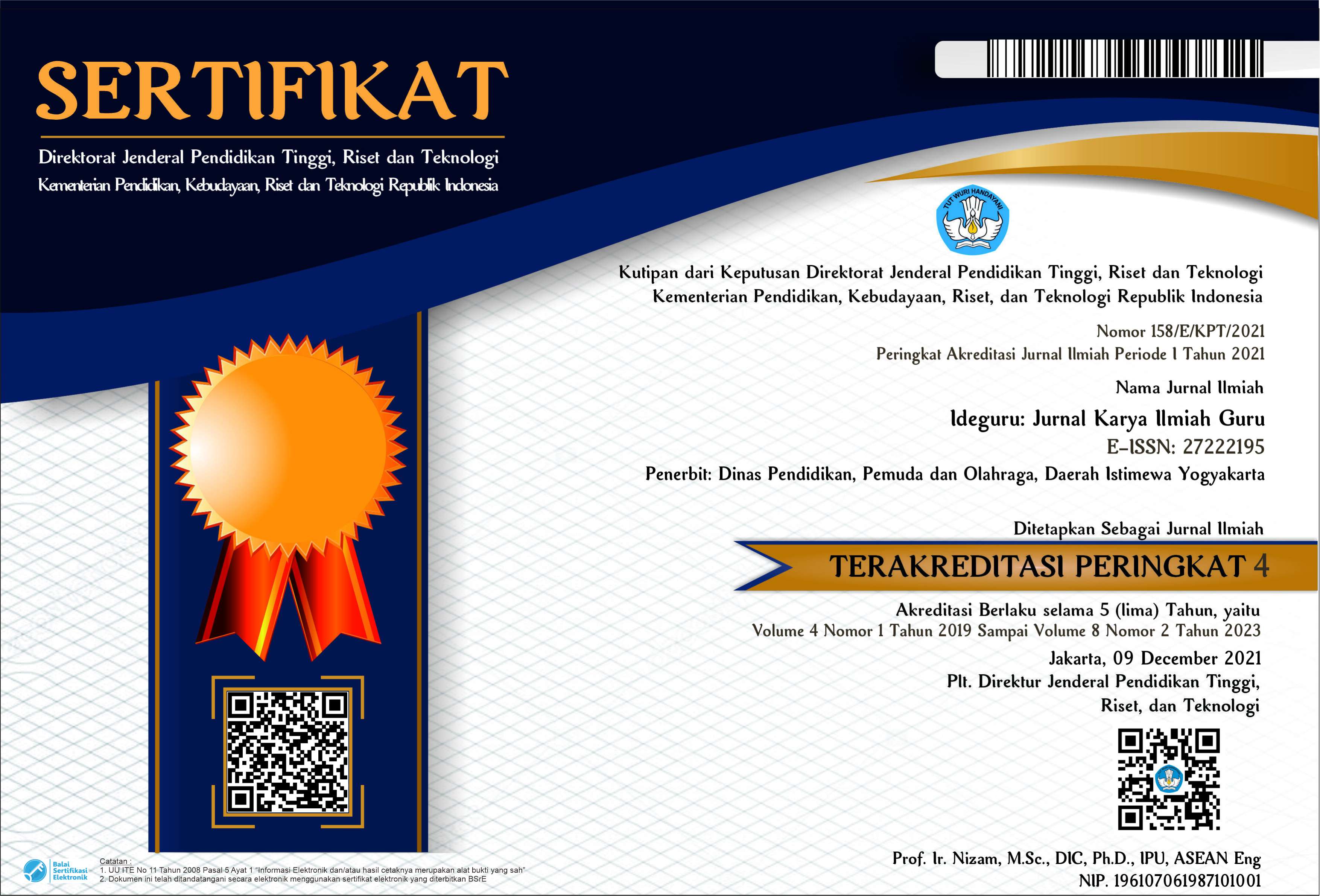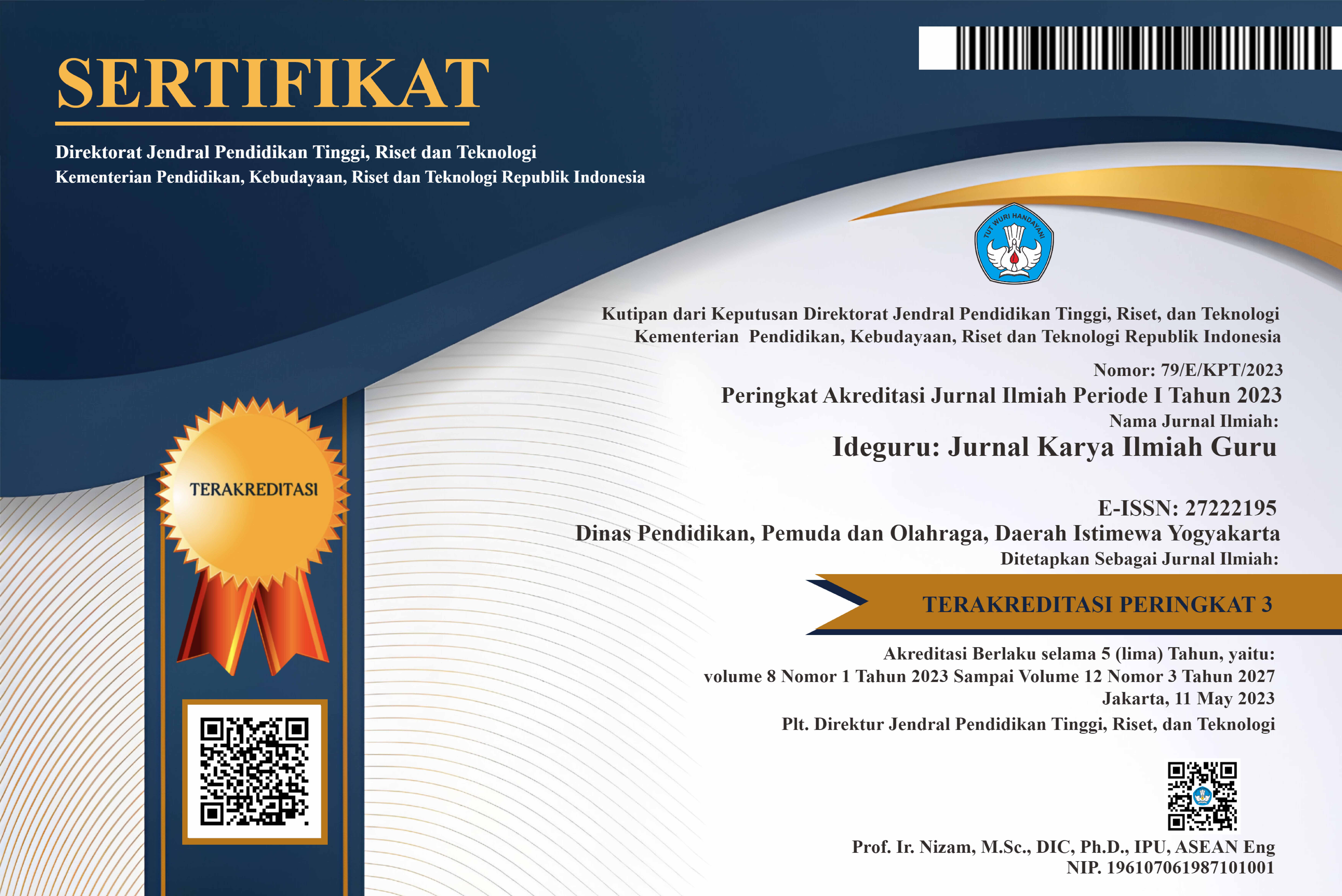Development of Teacher Innovativeness Instruments in the Face of Educational Innovation
Abstract
Teachers had different responses in facing top-down educational innovation. Hence, policymakers must create a map to implement a more effective strategy for innovation success. This study aimed to develop a teacher innovativeness instrument through theoretical development methods. Based on the synthesis of the theoretical research, five indicators were obtained and expanded into 25 four-scale Likert statements. Content validity was proven by eight experts and then quantified by the Aiken formula, resulting in a coefficient of 0.84 or a high category. The trial was conducted on 85 teachers from various levels and regions in Indonesia to get empirical data. Construct validity was proven by Exploratory Factor Analysis (EFA) and resulted in four factors with Eigenvalue > 1 which were factors that underlie the level of teachers innovativeness, namely volition, coverage novelty, structural obedience, and environmental communication. The Principal Component Analysis (PCA) extraction and Varimax rotation proved that all items had good criteria because their factor loading was> 0.4, proving the construct validity. The instrument reliability estimated by the Cronbach Alpha formula resulted in a reliability coefficient of 0.954, or a very high category. Thus, this instrument qualifies as a good instrument and could be utilized singly or with the addition of supporting instruments.
PDF Downloads
Copyright (c) 2023 Jumini

This work is licensed under a Creative Commons Attribution 4.0 International License.

 DOI:
DOI:














